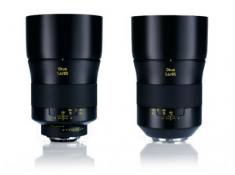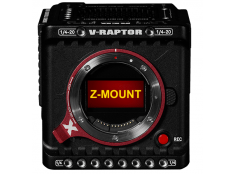How To Get Into Photography In 2024: Ultimate Guide
Monday 13 May 2024
 621
621
 Reproduction without the author's authorization is prohibited
Reproduction without the author's authorization is prohibited
Before you start, you need to answer this question: Do you really like photography? Quentin Tarantino said, “If you truly love cinema, you can’t help but make a good movie.” You don’t need to go to school to learn how to do photography, you don’t need to understand lenses. You have no control over using the device in your hand to create the work in your mind.
Do you really like photography?
Of course, we don’t need to aim to become a master, but we still need to make sure we are passionate about photography. How to tell if you have a passion for photography? In 2024, almost everyone will have a smartphone. If you often use your smartphone to take photos of landscapes, wild animals, portraits or anything else that touches you. Then you probably have a passion for photography.

what do you need?
In 2024, the camera functions of most smartphones are already very powerful. Both iPhone and Android phones usually perform very well. Of course, even the best smartphones can hardly compete with entry-level cameras when it comes to photography. This is because cameras typically have larger sensors, better lenses, and color science. So, if you plan to get into photography, I hope you could buy a professional camera.
A professional DSLR or mirrorless camera usually has interchangeable lenses. Of course, there are also fixed-lens mirrorless cameras like the Fujifilm x-100. There are also point-and-shoot cameras or point-and-shoot film cameras, which usually also don’t allow for interchangeable lenses. But let’s first talk about the main components of an interchangeable lens camera.
Camera Body (body)
The camera body is essentially the chassis of the camera, housing all the critical components. It includes the image sensor, which captures the light to create the photo, the viewfinder, through which you compose your shots, and the shutter, which controls the duration that light hits the sensor. The body defines the camera’s capabilities and its physical form. For professional cameras, the body can be quite robust, designed to withstand various weather conditions and long hours of use.
Sometimes, some cameras use fixed lenses, in most zoom cameras, the body and lens of this type of camera are fixed and cannot be replaced. If you are only interested in zoom cameras or do not plan to buy a camera with interchangeable lenses at all, you can check out this blog: 7 Best Zoom Camera 2024:Best For Wildlife And Sports Photography
Lens (optional)
The lens is a crucial element that attaches to the camera body. It’s responsible for focusing light onto the sensor or film to produce a clear image. Lenses come in various focal lengths and apertures, which influence the field of view and the amount of light entering the camera, respectively. They can be prime lenses with a fixed focal length or zoom lenses that cover a range of focal lengths. The aperture, denoted by an f/number like f/1.8, affects the lens’s speed and the depth of field in your images.
Sometimes, when buying a camera, there will be a kit of camera body + lens, and you can get one lens at a relatively low price. Maybe that lens is not the best lens, but it is enough for you to get started with photography.
Memory Card(must have)
A memory card is where all the photos and videos are stored. There are different types, such as SD cards, microSD cards, CompactFlash, CFexpress, and CFast cards, each with varying capacities and speeds. The right memory card for your camera depends on your specific needs, like storage capacity for extensive shoots or fast read and write speeds for high-resolution video recording.
Memory cards are something that many people overlook. Without a memory card, you cannot take pictures. Therefore, whether you are a newbie or a professional photographer, you need a memory card. If you buy a camera package that does not include a memory card or only has one memory card, I suggest you buy a memory card and put it in a place where you will not forget it.
Point-and-shoot cameras
As mentioned above, point-and-shoot cameras are generally compact, fixed-lens cameras. However, even a point-and-shoot camera is enough for entry-level photography most of the time. If you are interested in film point-and-shoot machines, you can check out this article:10 Best Point And Shoot Film Cameras In 2024.
Tripod (optional)
Tripods provide a stable platform for your camera, allowing you to capture sharp images, particularly in low-light conditions or when using slow shutter speeds. They are indispensable for long exposure photography, such as night scenes, light trails, or any situation requiring precision and immobility.
Filter (optional)
Camera filters are like sunglasses for your camera. They attach to the lens and can:
Protect your lens from scratches.Reduce glare and reflections.Enhance colors, like making skies bluer.Control light coming into the camera, useful for shooting waterfalls or crowds.
smart phone
Smartphones have revolutionized photography, putting powerful cameras in our pockets. Whether you’re a beginner or an enthusiast,
Understand the features of your smartphone camera. Explore settings like exposure, focus, and white balance. Learn about the different modes (Portrait, Night, HDR, etc.) available on your phone. The operation menu of most cameras may be much more complicated than that of a mobile phone, but taking pictures on a smartphone in professional mode is similar to that of a camera. And mobile phones surpass almost all cameras in terms of portability. You can use your smartphone to practice composition and how to get the exposure right. If you can take amazing photos with your smartphone, you'll quickly learn how to use it when you get a professional camera.
What do you need to learn?
To get into photography, start with a camera and a willingness to learn. Expand your knowledge on basic principles like exposure, aperture, shutter speed, ISO, and the exposure triangle. Experiment with different styles such as portraits, landscapes, or macro photography to find what you enjoy. Invest in equipment like a good camera, lenses, and accessories for higher quality images. For theoretical knowledge, understand the concepts of depth of field, focal length, sensor size, focus, sharpness, camera settings and modes, metering modes, focus areas, white balance, and the histogram. Composition and editing are also crucial.
exposure triangle
The exposure triangle is the most basic and important theoretical knowledge in photography. The exposure triangle explains how aperture, shutter speed, and ISO work together to control the exposure of a photo.
Shutter speed
shutter speed is the length of time the camera’s shutter remains open, allowing light to hit the sensor. It’s measured in seconds. To double the amount of light, you need to double the exposure time. For example: Moving from a shutter speed of 1/60 s to 1/30 s adds a stop of light because the shutter remains open twice as long. Changing from 1 second to 1/8 second decreases the exposure by three stops: 1s to 1/2s (one stop), 1/2s to 1/4s (another stop), and 1/4s to 1/8s (third stop).
Aperture
Aperture refers to the size of the circular hole in the lens that lets in light. The bigger the aperture (wider opening), the more light reaches the camera sensor. Each time you double the area of the aperture opening, you double the amount of light (increasing exposure by one stop). Conversely, halving the aperture area decreases the amount of light hitting the sensor (decreasing exposure by one stop).
ISO
ISO represents the camera sensor’s sensitivity to light. A higher ISO increases sensitivity and exposure, while a lower ISO decreases it. Adjusting ISO allows you to add or reduce light without changing aperture or shutter speed.
practice more
“Your first 10,000 photographs are your worst.” — Henri Cartier-Bresson. Although it seems very strict, this statement is completely correct. You have to keep shooting to find your own shooting style. But in the beginning, you can try to imitate your favorite photographers to ensure that you maintain your passion for photography.
keep your passion
To keep your passion for photography burning bright, you should experiment with different genres, commit to regular practice, and continuously learn from books, courses, and mentors. Engage with a community of fellow enthusiasts, take on challenges, and share your work for feedback. Reflect on your progress, find inspiration in the works of photographers you admire, and most importantly, remember to relish the joy and artistry of capturing the world through your lens. This holistic approach will fuel your creativity and love for photography as you grow and evolve in your craft.
Summary
Embarking on the journey of photography is an exciting venture! Use the camera you already have and focus on honing your creative skills rather than accumulating gear. Learn which settings matter; practice with modes other than full Auto to understand your camera better. And remember, taking lots of photos and experimenting with different compositions will greatly improve your skills over time. Happy shooting!
Statement: all contents and remarks made by K&F CONCEPT 's intranet friends only represent themselves and do not reflect any K&F CONCEPT 's opinions and views.
-
 Rumored:Nikon Z5 II specsMonday 17 February 2025
Rumored:Nikon Z5 II specsMonday 17 February 2025 -
 Zeiss announcing a new Otus for mirrorless camerasFriday 14 February 2025
Zeiss announcing a new Otus for mirrorless camerasFriday 14 February 2025 -
 LUMIX S1RII first spy photoWednesday 12 February 2025
LUMIX S1RII first spy photoWednesday 12 February 2025 -
 Nikon Z-mount RED movie camera coming?Tuesday 11 February 2025
Nikon Z-mount RED movie camera coming?Tuesday 11 February 2025 -
 Nikon Z5ii will be released in the second quarter of 2025Monday 10 February 2025
Nikon Z5ii will be released in the second quarter of 2025Monday 10 February 2025









